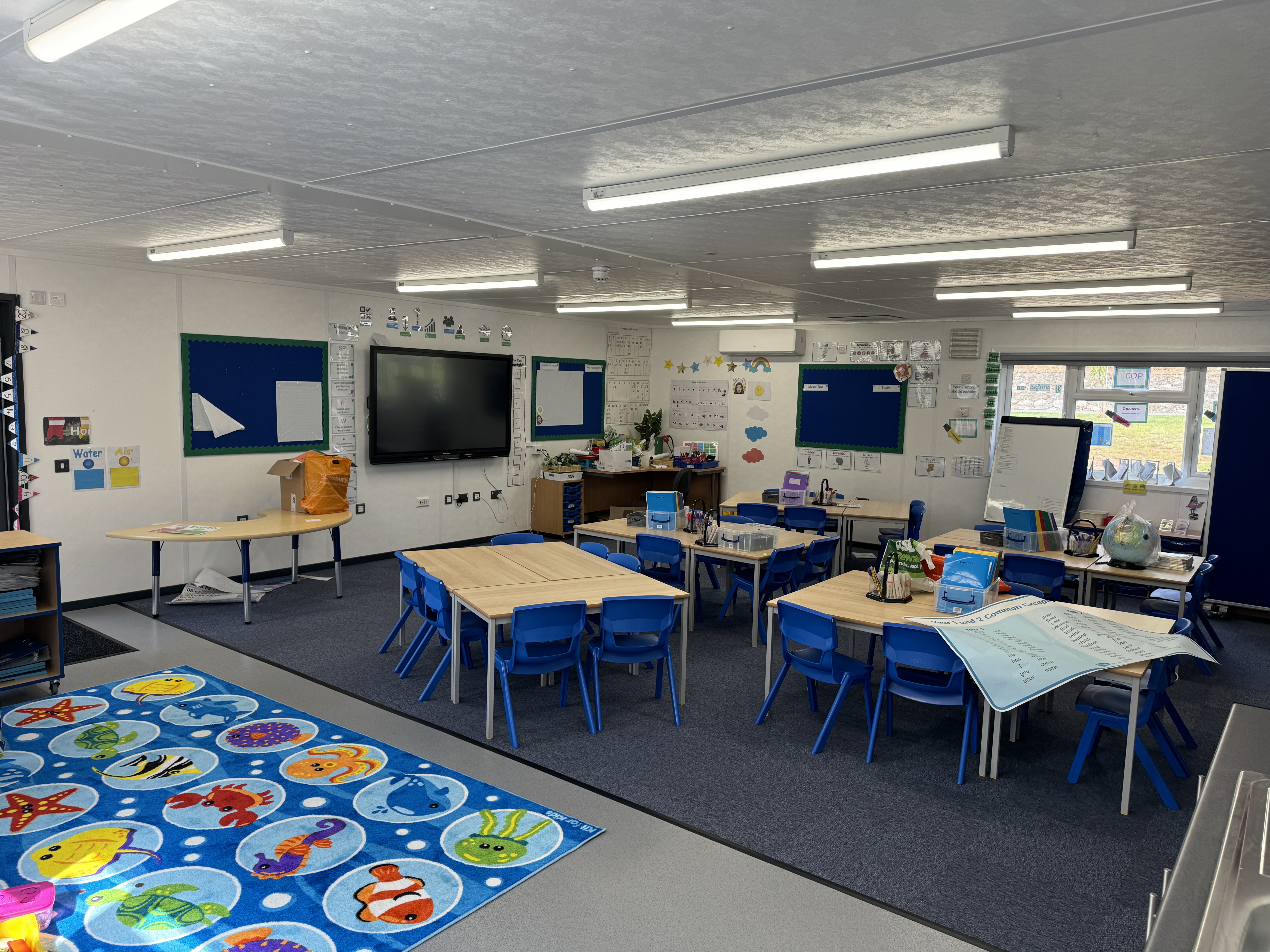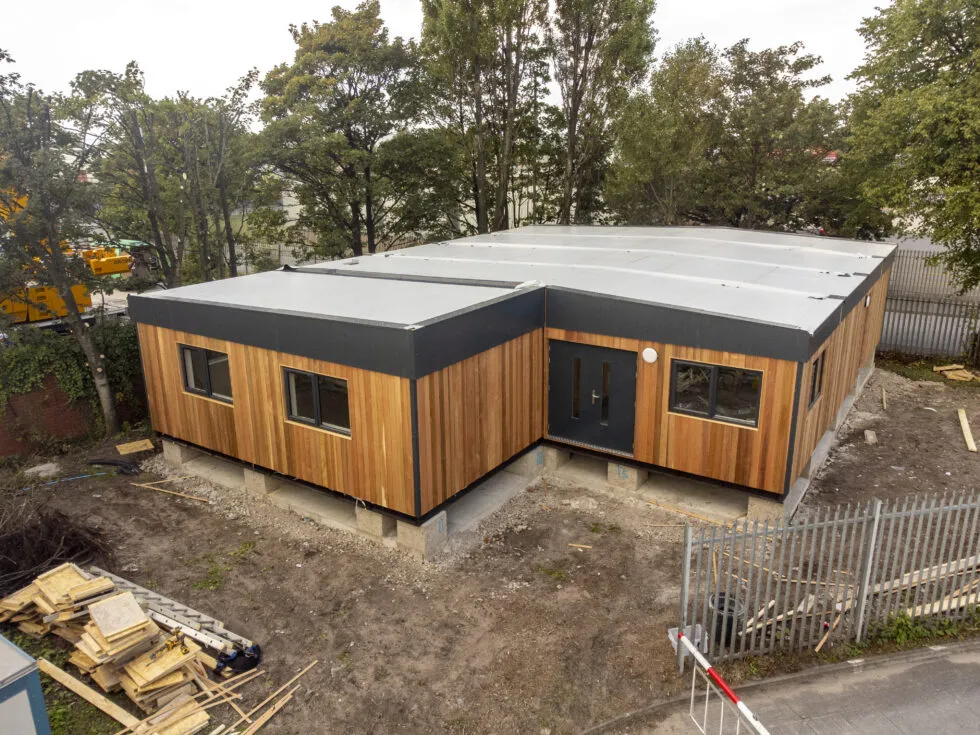Over recent years, education authorities and schools have been rethinking their spaces with a view to making them more inclusive for students with Special Educational Needs (SEN). Modular buildings have become an increasingly attractive option for educational institutions for modular classrooms designed with SEN environments in mind. The speed, efficiency, and flexibility of these modular school buildings mean that they provide schools with the support they need to create inclusive spaces quickly.
From sensory support and accessibility to flexible and inclusive spaces, modular buildings offer benefits that surpass those of traditional builds. If you have not yet considered modular school buildings as an option, we can explore why this is an excellent choice for SEN provision in your school.
There is more to SEN provision than simply admitting students with special educational needs into mainstream education. For classrooms to be truly inclusive, they need to be designed so that the physical environment supports a diversity of learning styles, sensory needs and emotional regulation. To accommodate the needs of SEN students, there are some key considerations.
Accessibility: The design and configuration need to consider the needs of individuals using mobility aids or wheelchairs. Think about step-free access, wider doorways and corridors and adjustable furniture.
Sensory design: Ensure that environments are not too overwhelming. Use natural light whenever possible and install dimmable, controllable fixtures. Employ acoustics to reduce reverberation and external noise. Use textures and finishes that are not too harsh and provide a calming atmosphere.
Zoning and flexibility: Plan areas for group work, individual learning, quiet spaces, breakout zones and sensory corners.
Safety and predictability: Make sure you include clear pathways, safe surfaces, secure fixtures and well-planned entrances and exits. Also, ensure that areas allow supervision with respect and privacy.
Assistive and specialised technology: Modular buildings can incorporate technology to assist students with special education needs. This includes hearing loops, interactive displays, communication aids, and equipment for physical or therapy needs.
By considering these elements, you’ll be able to provide an environment where students do not feel overwhelmed and can thrive with social interaction, learning and growth.

Using modular construction for SEN classrooms provides several advantages over more conventional construction methods. Whilst some of the benefits are clearer, there are other ways that modular school buildings are providing help for students with additional educational needs.
Retrofitting or adapting existing buildings can be costly, slow, and designs often need to be compromised. Whereas, with modular buildings, design decisions can be made before the building arrives on site. By choosing a modular classroom building, inclusion features like accessibility, acoustics and sensory zones can be integrated into the initial design.
Modular classrooms are constructed off-site, so most of the noising, messy construction work, which can be distressing for some students, is done away from the school site. This means that student routines can carry on as normal, and any on-site construction work is kept to a minimum. Once modular units are delivered to the site, they can be operational in a matter of days.
Modular buildings adapt to the changing needs of schools. As student populations grow or shrink, or as the strategies of the education sector change, modular classrooms can evolve with them. Modular buildings can allow schools to expand, reconfigure or even relocate. The interiors of schools can easily be reconfigured with dividers and flexible layouts. They can be added to or removed from to keep up with the changing demands of the school population.
It is understood that modular buildings are an environmentally friendly answer to construction. Modular construction reduces waste and delivery times. The predictable nature of modular timelines means that project managers can keep control of budgets. As an energy-efficient solution to buildings, they not only help reduce running costs but also ensure that students feel comfortable. For SEN classrooms, keeping rooms at a comfortable temperature, good air quality and lighting means improved well-being and concentration.
Being able to deliver calm, sensory-friendly environments, maintain routine, and give pupils control (for example, over lighting, temperature, or the ability to move into a quiet corner) supports emotional regulation. Having consistent, dedicated, well-designed spaces is less disorienting and stressful. Staff report better outcomes when the environment reflects the needs of learners, rather than forcing learners to adapt themselves to unsuitable spaces.

It’s not enough to just install classrooms designed to be inclusive. Modular school buildings are part of a wider strategy of inclusion, staff support and pedagogy. There are other points to consider.
Consistency across the school: Even if only some units are modular SEN classrooms, routes to those spaces, communal areas, sensory breaks, and staff deployment should be carefully considered to be coherent.
Training and culture: All staff, including teachers, assistants and support staff, need relevant training to understand how to use the space and how to support students within that space. They need to understand how to manage sensory breaks and transitions. The physical space works so much better when staff know how to work with it.
Maintenance and flexibility over time: As with any premises, modular classrooms will need maintenance over time to carry on working effectively. Regular upkeep ensures that lighting systems, ventilation, furniture and acoustics do their job properly. Planning for maintenance budgets, and also for the possibility of reconfiguring or expanding modular units, is essential.
Engagement with users: Getting feedback from pupils and families about what works and what doesn’t can reveal small but significant changes. Changing lighting levels, adjusting layouts, replacing finishes or furniture can significantly affect a student’s experience.
There is more to creating inclusive learning spaces than just installing prefabricated units. Modular SEN classrooms give schools the opportunity to rethink how they approach teaching to support every pupil, especially those with special educational needs. Modular school buildings give schools the chance to build environments that are accessible, sensory-aware, flexible, safe, and emotionally supportive, with faster turnaround and often better cost efficiency.
GCS Group have years of experience in creating efficient and inclusive modular school buildings. We can help schools install modular SEN classrooms that are not temporary fixes, but foundations for inclusive education that last.
If your school is looking for new buildings that are fast, efficient and inclusive, speak to our team. We’ll work with you from the very start of the design process and create cost-effective classroom buildings for the future of your school.